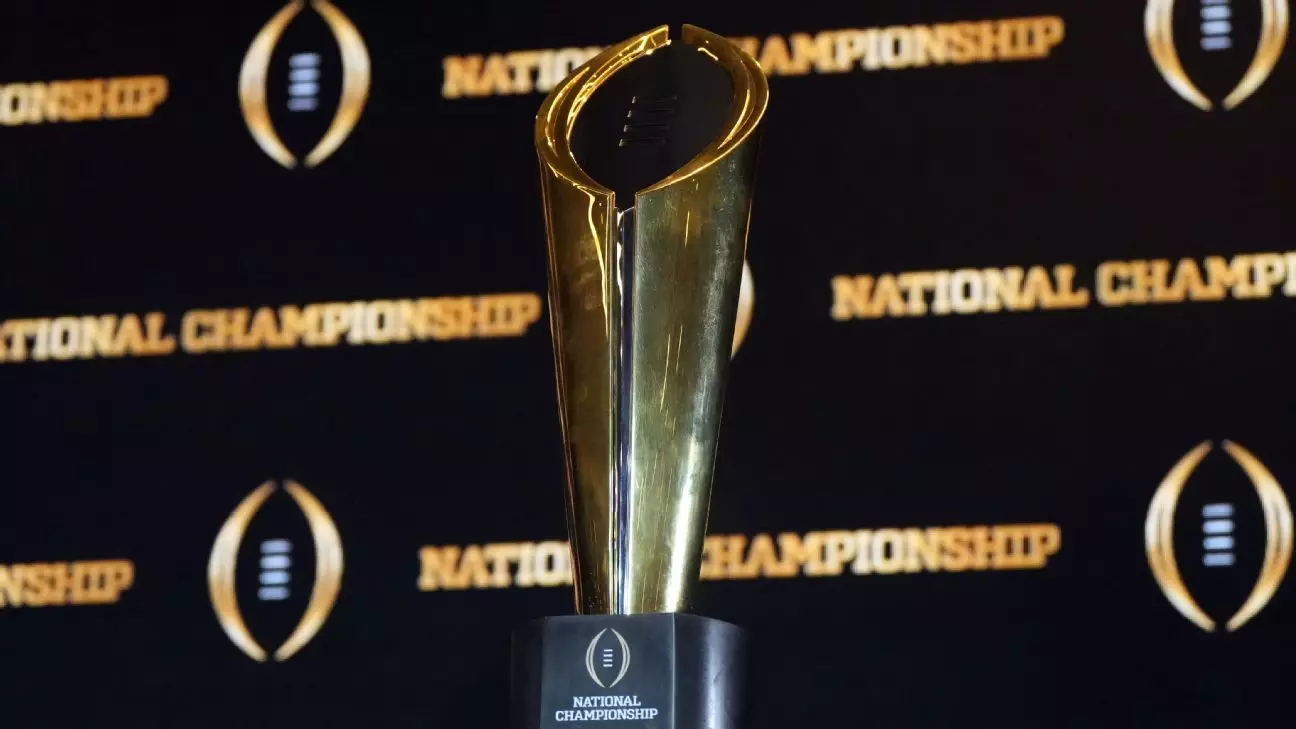In the intricate world of college football, the College Football Playoff (CFP) is a spotlight shining brightly on some of the nation’s most storied programs. Yet, as teams and fans gear up for pivotal games, unexpected complications in scheduling can arise. A stark example of this surfaced recently when SEC commissioner Greg Sankey proposed a change in the timing of two significant bowl games – the Goodyear Cotton Bowl Classic and the Capital One Orange Bowl. His suggestion came as a response to concerns regarding fairness and team preparedness, particularly for Notre Dame, who faced an unusually tight turnaround between their game and that of their competitors, Penn State.
While such concerns reflect the need for balance among competing teams, the refusal to alter the pre-established schedule demonstrates a commitment to adhering to logistical realities that govern college football. Sankey’s request, grounded in fairness for players, met resistance from CFP executive director Rich Clark, who highlighted the complexities associated with shifting the dates and times of the bowl games. These complications not only affect the teams involved but also influence fan experiences and create broader community repercussions.
The scheduling landscape took a grave turn when an unfortunate event—a tragic pickup truck attack in New Orleans—set the stage for Sankey’s concerns. The incident left a deep mark on the community and influenced the execution of the Allstate Sugar Bowl, resulting in a delay. While this response was rooted in ensuring the safety and security of all involved, it added a layer of urgency and concern to the scheduling of subsequent games.
Sankey’s commentary on the Finebaum Show exemplified this sentiment, emphasizing that the conversation surrounding schedule alterations arose not simply from strategic sporting concerns, but in light of a collective tragedy that impacted many lives. The poignant juxtaposition of sports and societal incidents reiterates how intertwined these two spheres are; unforeseen events in the world can ripple through the fabric of college sports, highlighting an unfortunate but undeniable intersection.
Fairness in athletics is an ongoing debate, and when it comes to collegiate sports, these discussions become even more crucial. In this instance, Notre Dame faced questions about whether it can effectively compete against Penn State after a shorter resting period. Traditionally, equity in sports often hinges on universally applied rules, ensuring teams have the necessary preparation and recovery time leading into crucial matchups.
Though Sankey and other officials recognized this disparity, establishing an adaptable approach faced significant hurdles. The multitude of moving parts—for teams, stadiums, and fan schedules—contributed to the decision against scheduling changes. Clark reiterates the inherent challenges of logistics, poignantly acknowledging deeply rooted traditions in playoff scheduling which dictate much of the industry’s operational flow. The question, however, remains: when aiming for fairness, how much disruption can be justified when major tragedies unfold?
This situation epitomizes the intricate balancing act at play within college football: safeguarding player welfare against logistical realities and historical frameworks. As institutions and governing bodies navigate through the fallout of unexpected events, they must remain attuned to the significant implications of their choices—choices that reverberate through the lives of athletes, teams, communities, and fans alike.
While the decision not to adjust the timing of the Goodyear Cotton Bowl Classic and the Capital One Orange Bowl may seem mundane to some, it showcases the most profound challenges faced by officials managing high-stakes situations in collegiate athletics. As college football continues to evolve, with both triumphs and tragedies shaping its narrative, the integrity of its structures will invariably face scrutiny—challenging its leaders to respond with both wisdom and compassion amidst this complex landscape.


Leave a Reply